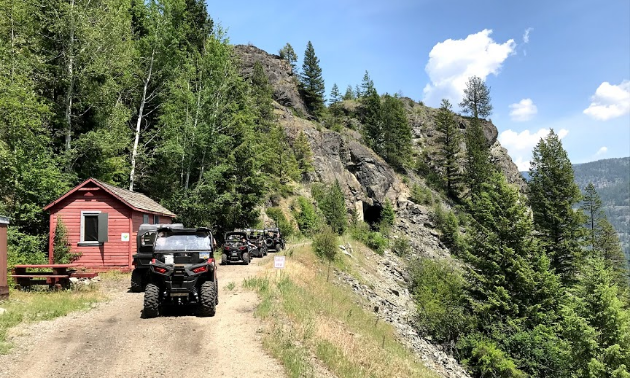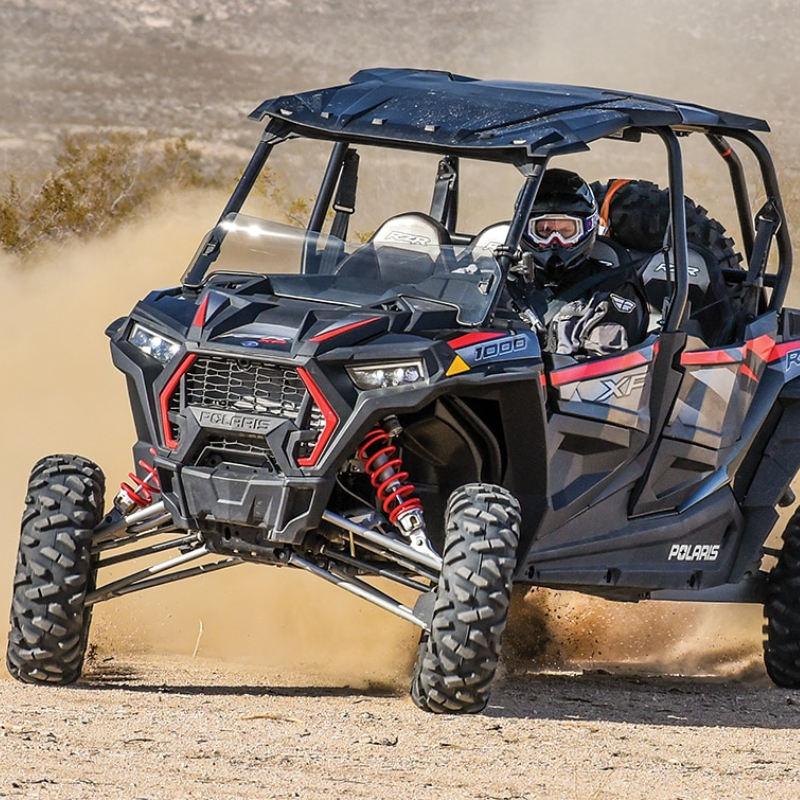The guys I ride with have a high standard of safety. If they come across anything dangerous along the trail, such as an “eye poker,” fallen tree or washout, they take care of it. This ensures they won’t cause any problems for anyone else. Washouts are marked with ribbons while branches are cut and everyone is better for it. These obstacles are natural and expected. However, gates across trailways are neither natural nor expected on the trail, but they can be dangerous.
Following the tragic accident where an ATVer died by riding into a gate on April 11 on the rail trail near Grand Forks, B.C., I wanted to discover how much of a role trail gates play in off-road injuries and fatalities.
In their study “Injuries related to off-road vehicles in Canada,” Vanlaar et al. (2015) analyzed extensive data from three Canadian databases regarding injuries and fatalities associated with off-road vehicles (ORV), including ATVs. According to this study, the leading cause of fatal ATV accidents is colliding with a fixed object. This makes up 52.6% of all fatal ATV accidents. Oftentimes for offroad users, this fixed object is a gate.

Graham Lindenbach is the director of ATVBC, Vancouver Island. — Photo courtesy Graham Lindenbach
During a four-month period in New Hampshire (April to July 2002), three separate deaths occurred on the local trail systems that involved the collision of an ORV with a trail gate. This prompted a study (U.S. Centers for Disease Control and Prevention [CDC], 2003) that revealed five fatalities due to ORV collision with a metal trail gate between 1979 and 2002.
In an accident report, many factors are analyzed, including those that are human-related, vehicle-related and environment-related. Human factors are often more heavily analyzed. Did this individual have proper training with the off-road vehicle? Were they intoxicated? Were they wearing a helmet? As for vehicle and environmental causes, headlights, speed and time of day must also be brought into question. An environment-related factor can be something on the trail itself that causes undue risk. In the case of a gate, even if a rider is doing everything correctly, the gate is a true danger—a silent killer.
One of the incidents in the CDC study showed just that. It involved a 12-year-old boy who was riding a registered off-road vehicle and fatally struck a gate in the early afternoon. He was familiar with the trails, wore protective equipment (helmet, chest protector and riding boots) and was riding with adults. He apparently looked back to see if his group was following just prior to hitting the gate. He died instantly due to a cervical spine injury. This boy wasn’t doing anything wrong. He followed all the safety precautions. He wasn’t driving at night. He wasn’t intoxicated. He died all the same.
What happened in Grand Forks?
As with the boy’s accident in New Hampshire (CDC study), the accident near Grand Forks involved an individual who was familiar with the roads, wearing a helmet and was not intoxicated. She had even driven the very same road just hours before (when the gate was open). It was not dark out and the weather conditions were fair.
The Grand Forks gate is located on a public rail grade with no foreseeable purpose except to slow traffic down when it is closed (the gate is never locked). The gate was constructed from a single bar 46 inches (117 centimetres) off the ground and is only 1.5 inches (four centimetres) thick. This minimal profile and the faded yellow paint make it hard to see. There were no warning signs denoting gate ahead nor any type of reflectors on the gate. There was no stated protocol for leaving the gate open or closed. You could ride this rail grade in the morning with the gate open and later, upon your return, the gate could be closed.
From the New Hampshire cases, the authors concluded that adequate signage warning about an upcoming gate, and adequate gate construction (bright alternating colours and reflectors of a standardized size) should be used to ensure utmost safety for road users when a gate is present. However, this approach refers to gates at the entrance/exits of roadways (that is, where one might expect a gate) and does not address the existence of a fixed object in the middle of a road or trail. The gate in Grand Forks clearly does not meet any standards such as these and is an environmental factor that does not need to be in the risk equation.
So I have to ask, what is the purpose of a gate? This gate is not for animal control as animals can easily go around or under the single steel tube across the trail. The gate isn’t there to stop vehicle access, as there is also a pathway around the gate large enough to allow an ATV to go around if the gate is locked (which it never is). Supposedly, the gate was there to slow down traffic on the trail, but there are many other ways to slow vehicle traffic, including off-road vehicles, that are much safer, such as a large speed bump.
This was a tragedy that did not need to happen—and this is only one of the many gates that are located along our province’s trails. The government owes British Columbians a duty of care to act in their best interests. How many more fatalities are needed before we demand the removal of gates across trails in light of the risks they pose to road users?
References
Jennissen, C. A., Denning, G. M., Sweat, S., Harland, K., & Buresh, C. (2012). All-terrain vehicle injury prevention: Healthcare providers’ knowledge, attitudes, and the anticipatory guidance they provide. Journal of Community Health, 37(5), 968–975. DOI:10.1007/s10900-011-9538-4
U.S. Centers for Disease Control and Prevention. (2003). Deaths among drivers of off-road vehicles after collisions with trail gates: New Hampshire, 1979–2002. Journal of the American Medical Association, 289(11), 1375.
Vanlaar, W., McAteer, H., Brown, S., Crain, J., McFaull, S., & Hing, M. M. (2015). Injuries related to off-road vehicles in Canada. Accident Analysis and Prevention, 75, 264–271. DOI:10.1016/j.aap.2014.12.006








Comments